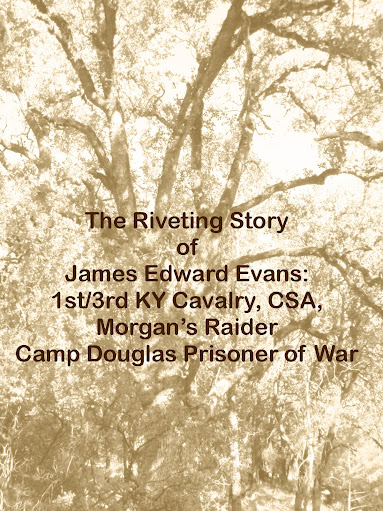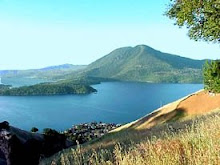June 5, 1863
John Hunt Morgan sent Captain William J. Davis to lead a scouting party along the Cumberland River. Their orders were “To obtain information concerning the enemy’s movements, and to accomplish such practicable results as may harass or annoy the enemy.”[i]
June 6, 1863
Captain Davis’s scouting party camped six miles from the river on the Burkesville and Creelsborough road.[ii]
June 7, 1863
Early on the morning of the 7th, the scouting party rendezvoused at Marrowbone Church with a detachment from Smith’s regiment then moved toward Glasgow seeking to intercept a detachment of the 5th Indiana Cavalry. At Button’s Cross-Road the scouting party learned that a detachment of Gano’s regiment were under attack from the 5th Indiana Cavalry. Captain Davis’s party swiftly changed course and road for Edmonton to provide assistance. They arrive too late.
Giving pursuit, Captain Davis’s party overtook the 5th Indiana Cavalry at Woods, about four miles from Edmonton. The 5th Indiana took cover in barns and outbuildings as the Davis’s party stealthily surrounded the area Keeping under cover in the woods and creek bed. The 5th Indiana attempted a retreat but in only eight minutes the skirmish was over.
The 5th Indiana Cavalry lost two men and had 4 wounded. The scouting party captured “40 horses, 30 guns and accouterments, 20 pistols, and 15 prisoners.” They also freed nine confederate soldiers “who had fallen into their hands.” [iii]
Davis’s party returned to the Marrowbone Store, having covered 77 miles in a single day.
June 8, 1863
“Munfordville, June 8, 1863
Sir: A scouting party of 70 men, sent out from Glasgow, was attacked and repulsed near Edmonton yesterday afternoon by a force of 400 rebel cavalry. Our loss is about 20 captured. All quiet here.”
~ Colonel Charles D. Pennebaker 27th Kentucky Infantry [iv]
On the afternoon of June 8th, Colonel Felix W. Graham led a group of 550 men from the 5th Indiana and the 14th Illinois Cavalry, equipped with four mountain howitzers, to Ray’s Cross-Roads. There they were met by 200 men under the command of Major Woolley.[v]
“During the Spring of 1863, detachments of at least three of Confederate Gen. John Hunt Morgan’s regiments, under Col. D. Howard Smith, Col. A. R. Johnson, and Col. D. W. Chenault, respectively, operated in and around Marrowbone and Mud Camp Ford, capturing a mill and operating it for the rebel army.
In June 1863, Gen. Edward H. Hobson was placed in charge of a Union camp at Marrowbone. Rumors were afloat that the notorious rebel, Gen. John Hunt Morgan, was planning another raid into Kentucky.” [vi]
June 9, 1863
Awakening his men before sunrise on June 9th, Colonel Graham led them through the darkness and down the Burkesville Road. When he was ten miles from Ray’s Cross-Roads he finally allowed them to stop for breakfast and to feed their horses. During this break, he learned of the Confederate operation of the mill at Marrowbone. Believing that Colonel Johnson and his men were still at the mill, Graham set off to capture them. When he arrived at the mill, Graham discovered that Johnson had moved to Mud Ford Camp.[vii]
Undeterred, Graham continued his chase of Johnson. However, he soon learned that Johnson and Chenault were five miles ahead of him on a very rough road. Realized that overtaking them would be highly unlikely, Graham turned his attention to O. P. Hamilton’s command which had camped on Kettle Creek in Turkey Neck Bend.
Unprepared for attack, Hamilton’s battalion hastily retreated at first volley, leaving behind their guns, clothing, and other articles.[viii]
Graham found the camp deserted and gave chase to the retreating men. His horses tiring, he gave over the task to the 14th Illinois who eventually became lost in the darkness.
Regrouping on the evening of June 10th at Ray’s Cross-Roads, Graham counted 40 Confederates killed and 36 taken prisoner. He further reported the capture of “ 2 twelve-pounder [sic] howitzers, 7 wagons, 40 horses and mules, 7 head of cattle, a large quantity of flour, meal, corn, &c.; about $10,000 in Confederate notes, all of their camp equipage….”[ix]
The miller at Marrowbone must have been a quick witted fellow as he talked Graham out of burning his mill by convincing him that he was loyal to the Union!
Morgan tried to use the skirmish to his advantage. He wanted more men in his brigades and saw the defeat of Hamilton’s battalion for as ready fodder for his scheme.
“Report of Brig. Gen. John H. Morgan, C. S. Army, of skirmish at Kettle Creek, Ky.
McMinnville, June 12, 1863
The enemy surprised Hamilton’s battalion at Kettle Creek, Ky., on the 9th instant, capturing two pieces of artillery, wagons and stores, $25,000 public funds, and many men and horses, scattering the entire command. Major Hamilton had been ordered to report to Col. R. C. Morgan, but refused. There is now no force on the Cumberland River, and the entire rear of this flank is exposed to raids, which no doubt the enemy will attempt, and, if successful, with the most disastrous results.
John H. Morgan
Brigadier-General”[x]
Ironically, those already under Morgan’s command were not faring any too well. While Morgan and his officers were wined and dined in private houses and slept warmly in private homes or inns, no provisions were made for the lowly enlisted “volunteers.”
Legends which state that Morgan’s Men lived off the land, pillaging any food and supplies they might need, appear to be largely true. These were not perfectly groomed cavalrymen in freshly ironed gray uniforms with plumed hats and highly polished boots. This was a motley crew. Lacking uniforms issued by the Confederacy, some wore homemade uniforms while others were seen wearing whatever clothing they had happened to be wearing when they enlisted. Boots were also in short supply. There are stories of shops along the path of the raid being looted of every shoe. A few of Morgan’s Men being seen riding barefoot. Many of the men wore large, noisy spurs and their hats pinned up at one side with a crescent or a star. Pinning up their hat on the side of their dominant hand allowed the men to wield their sword or Bowie Knife without knocking or slicing off the brim of their hat. Even their horses were their own, either brought from home or purchased with their own money. Confounding as it may be to comprehend, the Confederate Army did not supply its cavalrymen with horses. The Confederacy was simply too short of funds to do so. Lack of funds also extended to lack of weaponry. The men carried whatever weapons they owned or could get their hands upon. Not all of the men had been furnished with Confederate issued guns. Some carried their own hunting rifles. Confederate sabers were often abandoned in favor of Bowie knives which were far easier to wield. Supplies such as blankets and camp gear were insufficient for the number of men. Lucky men carried a woolen blanket provided by a loving wife or mother. Furthermore, this rag-tag group was completely cut off from Confederate supply lines. “Commandeering and foraging,” polite terms for begging and stealing from the local citizens, became a necessary means for survival.[xi]
June 20, 1863
Morgan’s main force moved toward Monticello, KY. Small skirmishes were reported.
June 28, 1863
As the turbulent month drew to a close, Colonel Adam Johnson encamped his Second Brigade at Turkey-Neck Bend on the Cumberland River, 15 miles from Burkesville.[xii]
Their march through Kentucky was about to begin.
ENDNOTES
[i] Official Records of the Union and Confederate Armies Vol. XXIII, Part 1 - Reports” p. 365.
[ii] Official Records of the Union and Confederate Armies Vol. XXIII, Part 1 - Reports” p. 365.
[iii] Official Records of the Union and Confederate Armies Vol. XXIII, Part 1 - Reports” pages 365-367.
[iv] Official Records of the Union and Confederate Armies Vol. XXIII, Part 1 - Reports” p. 365.
[v] Official Records of the Union and Confederate Armies Vol. XXIII, Part 1 - Reports” pages 367 -369
[vi] Trails-R-Us: John Hunt Morgan , 21-Civil War Camp at Marrowbone http://www.trailsrus.com/morgan/marrowbone.html
[vii] “Official Records of the Union and Confederate Armies Vol. XXIII, Part 1 - Reports” pages 367-368.
[viii] Official Records of the Union and Confederate Armies Vol. XXIII, Part 1 - Reports” p. 368.
[ix] “Official Records of the Union and Confederate Armies Vol. XXIII, Part 1 - Reports” p. 369.
[x] “Official Records of the Union and Confederate Armies Vol. XXIII, Part 1 - Reports” p. 369.
[xi] Horwitz, Lester V. “The Longest Raid of the Civil War”, 2001, Chap. 2, pages 9-10.
[xii] Duke, General Basil .“History of Morgan’s Cavalry” p. 414.
Sunday, December 7, 2008
Mud Camp Ford, Marrowbone, Kettle Creek, and Turkey-Neck Bend
Subscribe to:
Post Comments (Atom)





No comments:
Post a Comment